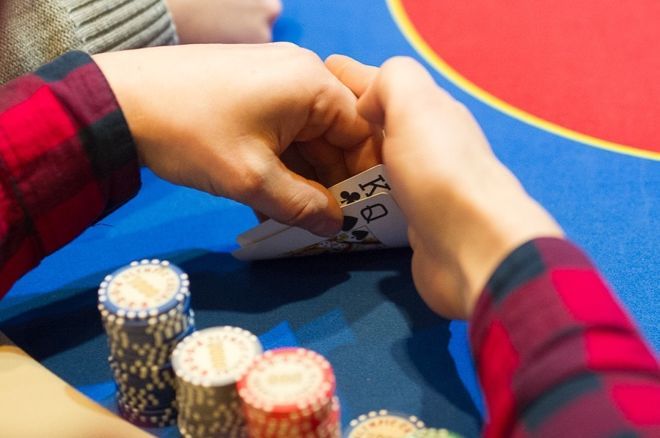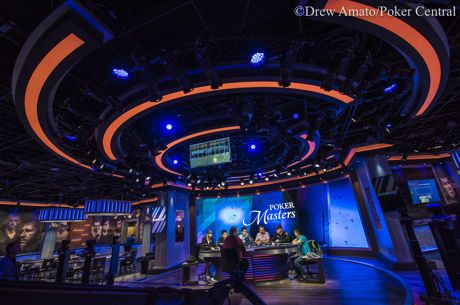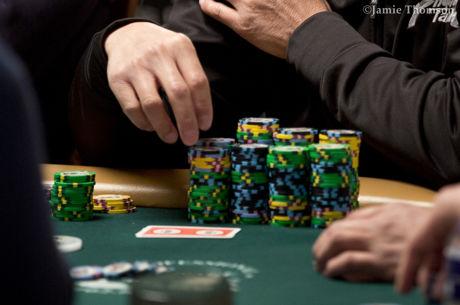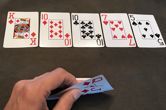Assessing 'Big Card Value' in No-Limit Hold'em Starting Hands

When players first start out learning no-limit hold'em strategy, many tend to focus a lot on starting hand selection. That's not a bad thing by any means, as figuring out you really shouldn't be playing every hand is an important early lesson to learn.
Pocket pairs are inherently enticing to play, as you know you have a "made hand" even before the community cards arrive. Players also soon learn to value suitedness (having two hole cards of the same suit) and connectedness (having two hole cards close to each other in rank), given their strength as drawing hands.
There's another category of starting hands new players tend to want to include in their range of playable hands �� "big card" hands. Setting aside the big pairs, we're referring to unpaired hands in which both cards are ten or higher.
Sitting atop this group as the best starting hand is AxKx, with AxQx, AxJx, Ax10x, KxQx, KxJx, Kx10x, QxJx, Qx10x, and Jx10x comprising the rest.
Preflop, the best of these hands might also be considered "made hands" (in a way) given the fact that they sometimes rate to be the best starting hand anyone has been dealt. That's why we open-raise or reraise with ace-king, and also consider opening pots with other "big aces" and "big kings" (i.e., hands containing an ace or king with a big kicker) and even with lesser hands in the group when folded to in late position.
That's also why most starting hand charts will list AxQx-suited as sixth-best behind aces through jacks and ace-king suited, and AxQx-unsuited is still often found hovering there at the bottom of the top 20 starting hands.
After the flop, however, the situation usually changes considerably for these big card hands since they usually have to improve in order to continue to be best. With two unpaired cards to start, you generally miss making a pair about two out of three times. Even when you do improve to a pair with these hands, you aren't necessarily guaranteed to win the pot going forward.
For instance, when you are holding KxJx and see a king-high flop, you're certainly glad to have made a pair of kings. But you shouldn't be overly confident your hand is best, especially if the betting gets heavy.
A lot of times with hands in the "big card" category (especially when they are suited), the prospect of making straights or flushes will be more encouraging than the prospect of making one-pair hands. In fact, flopping big draws with these hands often should embolden you to build pots more so than should be the case when the flop gives you a pair.
Take that king-jack example. Say you have K?J? and the flop comes K?7?6?. You've made top pair with a so-so kicker, and if you have the initiative after raising preflop, you should probably continuation bet. But you likely don't want to get involved building a big pot thereafter, since an opponent playing back at you may well have you crushed.
Compare that to having K?J? and seeing a flop come Q?10?4?. Or Q?9?3?. Those flops give you considerable equity by providing you strong draws, and thus might well warrant not only betting but raising in order to increase your reward should your draws hit.
Even if your draws don't hit, after betting the flop you are often in a position to semi-bluff the turn (or bluff the river) and thereby pressure an opponent holding a one-pair hand to give up. Also, in this case the "big card value" of your hand sometimes still provides you another bit of equity should you pair either your king or jack on the turn or river, even though doing so might actually cause you to slow down.
The lesson here is to recognize the actual worth of starting hands that contain big card value. With Q?J? you aren't unhappy to make a pair, but you should probably regard such a situation as having at best a medium-strength made hand, not a monster with which you're willing to risk a lot of chips. Even making a pair with AxKx (with which you will also have the best possible kicker) isn't always going to be as great as it seems, although it can prove profitable those times when your opponent has AxXx or KxXx and also has just the one pair.
Making just a pair with these big card hands means you likely will want to control the pot and get to showdown cheaply. Meanwhile flopping big draws with the same hands often will provide greater encouragement to bet and raise.
The value of these big card hands is twofold. They are speculative (like other suited and connected hands) and can win you a lot when draws hit. They are also capable of winning by making just a pair, though don't get too greedy and expect those spots always to be as profitable.
In other words, understanding "big card value" means learning to recognize when hands with two big cards can earn you big pots and when they cannot.









